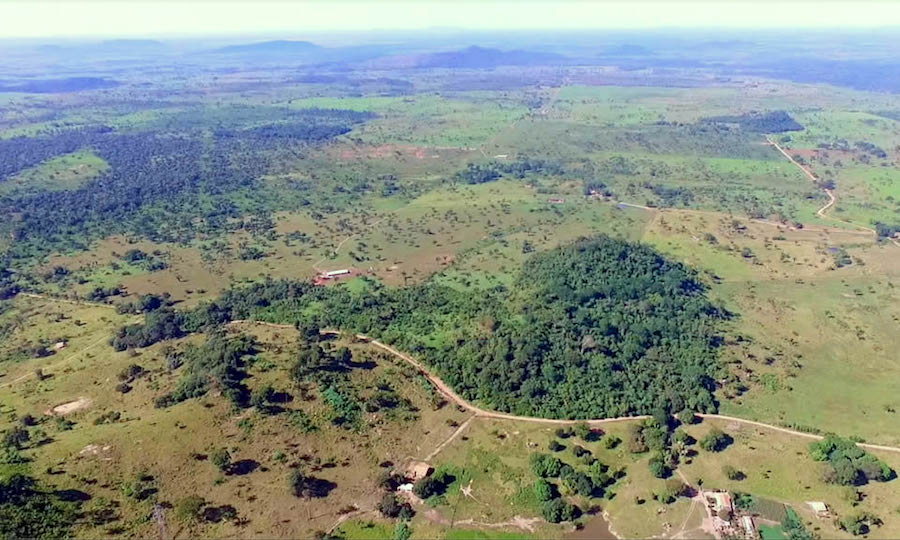Goldcorp: We have hit PEAK gold

Where will we find the gold?
Chuck Jeannes told the Wall Street Journal global gold production will start to decline “as easy-to-mine gold deposits become harder to find” and in the absence of any major technological breakthrough:
“Whether it is this year or next year, I don’t think we will ever see the gold production reach these levels again,” he said. “There are just not that many new mines being found and developed.”
Jeannes says a drop in mine supply from a high of 2,270 tonnes in 2013 will support the gold price and lead to further consolidation in the industry as gold majors opt to buy ounces.
Last year Goldcorp, worth $22.3 billion on the Toronto Stock Exchange, made an unsuccessful bid for fellow Canadian miner Osisko, but Jeannes could not be drawn on whether the Vancouver-based company plans to launch any other bids in the short term.
Goldcorp said last week its 2014 output could end up near the bottom end of its forecast range of 2.95 – 3.1 million ounces because of production problems at a Mexico mine.
Over the past 24 years, mining companies discovered 1.66 billion ounces of gold in 217 major gold discoveries, according to a recent study by SNL Metals & Mining, a resources research house.
The amount of gold discovered and the number of major discoveries (defined as any deposit with a minimum of 2 million ounces of contained gold) have been trending downward over time, from 1.1 billion ounces in 124 deposits discovered during the 1990s to only 605 million ounces in 93 deposits discovered since 2000.
The amount of potential production from these major discoveries is particularly concerning when looking at the discoveries made in the past 15 years. Assuming a 75% rate for converting resources to economic reserves and a 90% recovery rate during ore processing, the 674 million ounces of gold discovered since 1999 could eventually replace just 50% of the gold produced during the same period the Strategies for Gold Reserves Replacement study found.
Considering that only a third of the discovered gold has been upgraded to reserves or has already been produced, and that many of these deposits face significant political, environmental or economic hurdles, the amount of gold becoming available for production in the near term is certainly much less, the report adds.

The time it takes to bring a deposit into production is also increasing significantly, slowing the rate at which production is replaced. Between 1985 and 1995, 27 mines with confirmed discovery dates began production an average of eight years from the time of discovery. The time from discovery to production increased to 11 years for 57 new mines between 1996 and 2005, and to 18 years for 111 new mines between 2006 and 2013.

The length of time from discovery to production is expected to continue trending higher: 63 projects now in the pipeline and scheduled to begin production between 2014 and 2019 are expected to take a weighted-average 19.5 years from the date of discovery to first production.
{{ commodity.name }}
{{ post.title }}
{{ post.date }}

4 Comments
Colton Schulz
Did he have a seance with Matt Simmons before he came to that conclusion? Too soon?
montana83
At $1,300 gold mining supply drops. At $2,000, $3,500 and $5,000 it increases. When governments begin to become bankrupt, which they will, gold will return as wealth and to some extent, money. When that occurs governments will not put up roadblocks to stop gold mines but incentives to produce gold. Only then do things change.
The US produces roughly 200 tons of gold a year. The Northern Dynasty project in Alaska has 67 million ounces of gold. That is 2,100 tons. If the mine life was 21 years, the US just increased its gold production by 50%. See what I mean. Presently the EPA under Obama wants to prevent this mine form ever opening – legally or illegally as the Marxist environmental movement hates mining.. When the US is desperate for gold the mine will open. That is how things work.
Rubadubdub
The world can get along just fine without gold. Cheaper substitutions will be made. This reminds me of when the ancient Egyptians were in a panic about “Peak Papyrus”. OMG what will we do without plentiful papyrus, no more books will be written, no more sacred scrolls created, it will be the end of education, the end of civilization. Or not.
GoldBug
The odds to bring a junior explorer into full gold production after a large discovery are less than a 1% Chance.. Today, The cost and risk of succesful exploration is enormous. Then you have additional higher labour costs to consider, fuel costs, plant and equipment and high strip ratios for miners. In Australia the cash cost is usually around $1000 an ounce for a miner to Break- even. The Big deposits with large head grades greater than 20 grams a tonne are extremely difficult to find. But the rewards are great if a junior explorer makes a large discovery near surface. Gold mining success comes down to big head grades and large ounce Reserves.